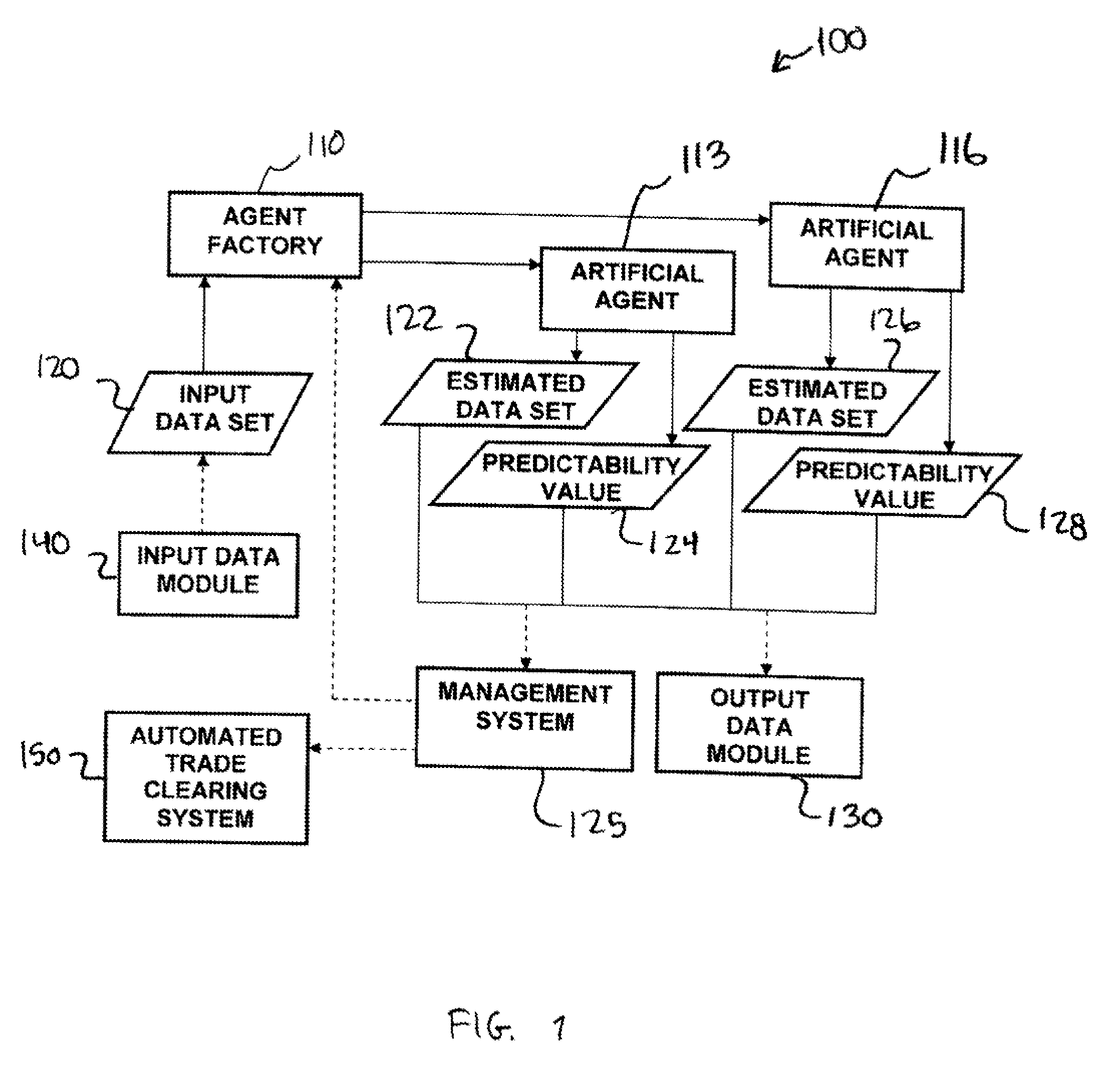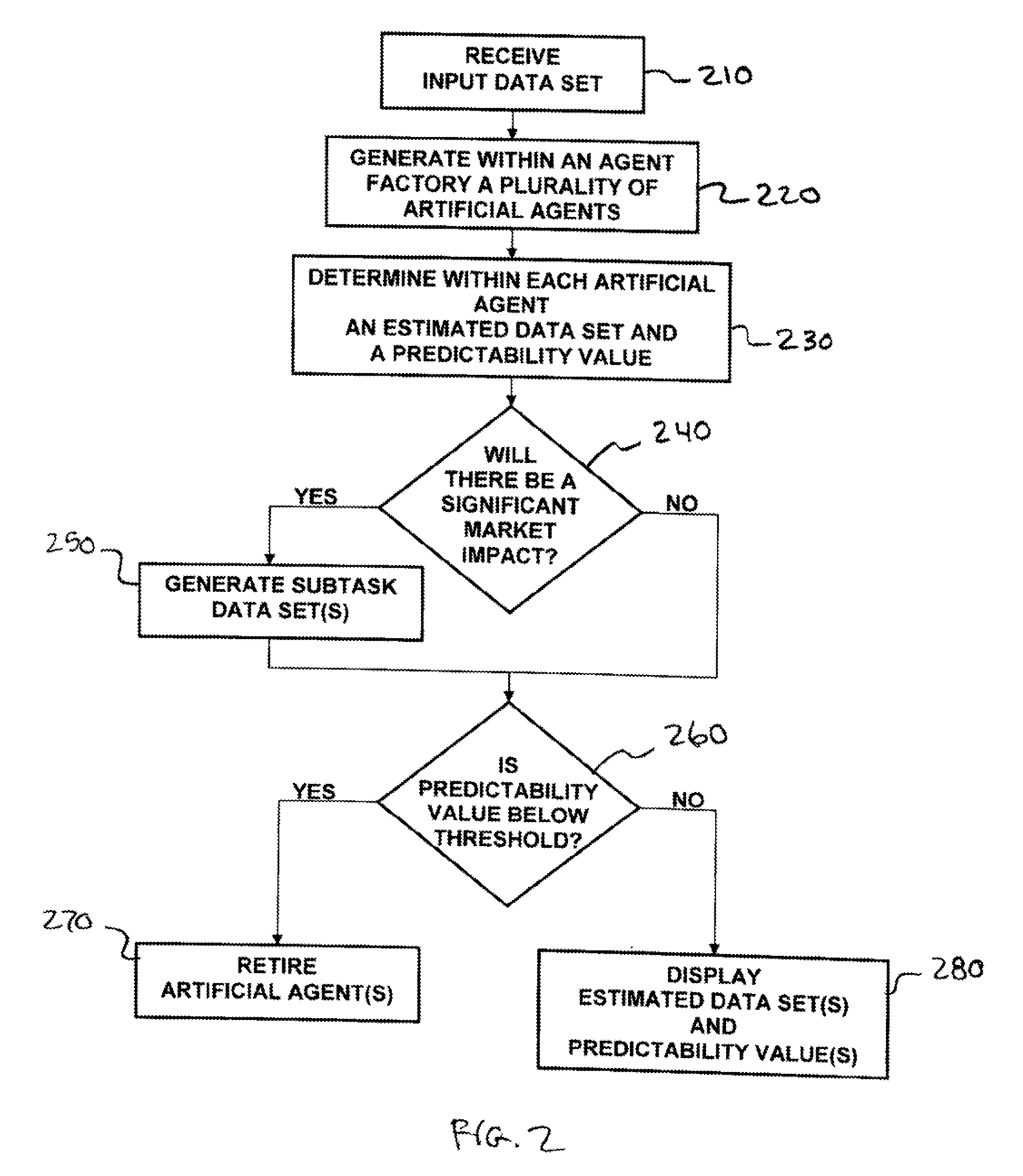Methods and apparatus for self-adaptive, learning data analysis
a learning data and self-adaptive technology, applied in the direction of instruments, pulse techniques, knowledge representation, etc., can solve the problems of unsatisfactory matchmaking in the service sector, relatively unsophisticated systems, and systems that are not true predictive systems
- Summary
- Abstract
- Description
- Claims
- Application Information
AI Technical Summary
Benefits of technology
Problems solved by technology
Method used
Image
Examples
Embodiment Construction
[0020]The present invention may be described in terms of functional block components and various processing steps. Such functional blocks may be realized by any number of hardware or software components configured to perform the specified functions and achieve the various results. For example, the present invention may employ various modules for performing various processes, such as receiving data, storing data, algorithm implementations, and the like, which may be executed or implemented in any appropriate manner, such as under the control of one or more microprocessors or other control devices. Similarly, software elements of the present invention may be implemented with any appropriate programming or scripting language, such as C, C++, Java, COBOL, assembler, PERL, eXtensible Markup Language (XML), with the various functions being implemented with any combination of data structures, objects, processes, routines, threads, or other programming elements. Further, the present inventi...
PUM
 Login to View More
Login to View More Abstract
Description
Claims
Application Information
 Login to View More
Login to View More - R&D
- Intellectual Property
- Life Sciences
- Materials
- Tech Scout
- Unparalleled Data Quality
- Higher Quality Content
- 60% Fewer Hallucinations
Browse by: Latest US Patents, China's latest patents, Technical Efficacy Thesaurus, Application Domain, Technology Topic, Popular Technical Reports.
© 2025 PatSnap. All rights reserved.Legal|Privacy policy|Modern Slavery Act Transparency Statement|Sitemap|About US| Contact US: help@patsnap.com



